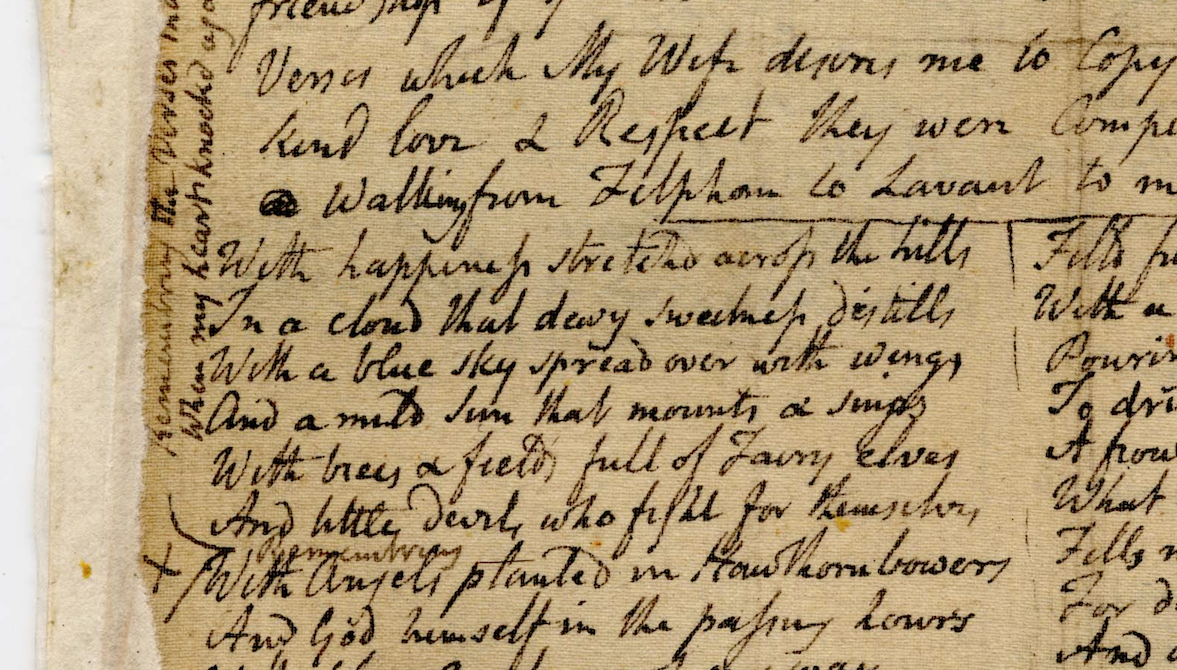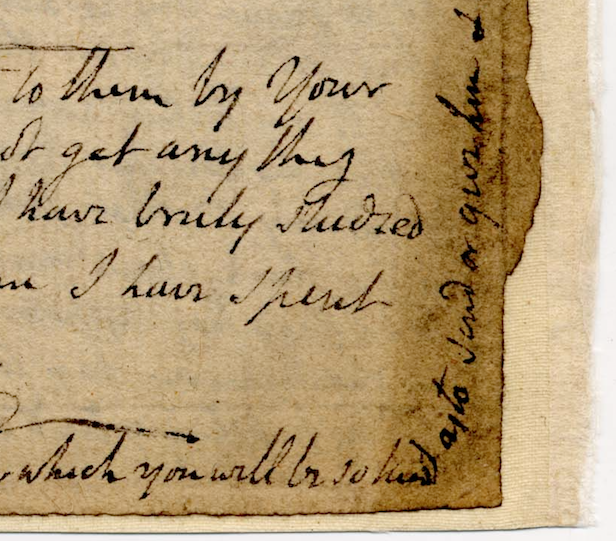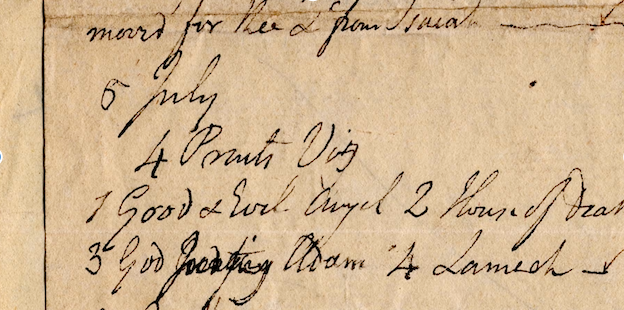It wasn’t until I began looking through all the letters in the Blake Archive that I realized just how unique Blake’s second November 22nd 1802 letter to Thomas Butts really is. This uniqueness poses some interesting problems when it comes to encoding. The text of this letter fills both leaves of paper from top to bottom and comes very close to the margins. It includes both prose and verse, and the verse is in two columns that begin on the first page and end on the second.
The substantial amount of text in a relatively limited space apparently induced Blake to write some of his text vertically in the margins. In the first of the two objects, two lines of verse are written in the left margin with a caret indicating where Blake meant those two lines of verse to be inserted into the poem. Additionally, at the very bottom of the second page of the letter, the P.S. line is written at the very bottom of the page and the last several words of it turn upward at the bottom right corner and run vertically up the right margin.
The latter of these two problems seems fairly straightforward. From looking at the BAD for Jerusalem in the archive, it’s as simple as using a <hi rend=vertical text> at the point where the text becomes vertical (even if that point is in the middle of a particular word) and then inserting a <note> explaining that at that particular letter in that particular word the text becomes vertical.

The issue with the first page of the letter may be a bit trickier. I’ll be looking carefully at the way Laocoon is encoded because it contains some vertical text, even if the vertical lines aren’t really an ‘insertion’ in the same sense that these two lines in the letter are. What I mean by this distinction is that the orientation of lines in Laocoon is deliberately varied as part of the overall artistic effect. These lines in the letter are vertical because it appears to be the only place they could fit.


